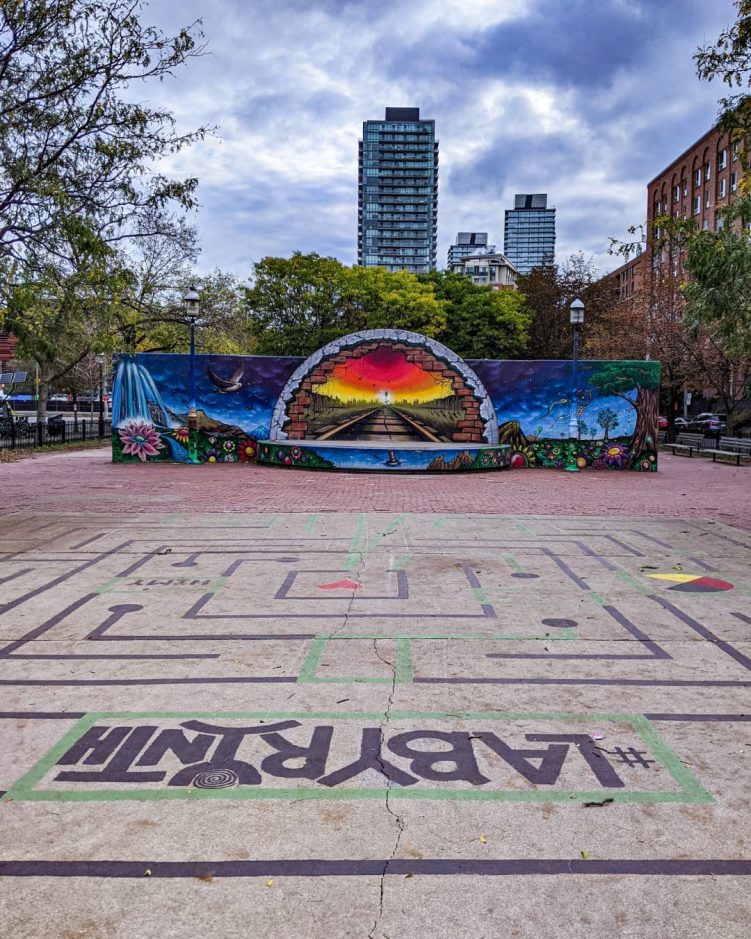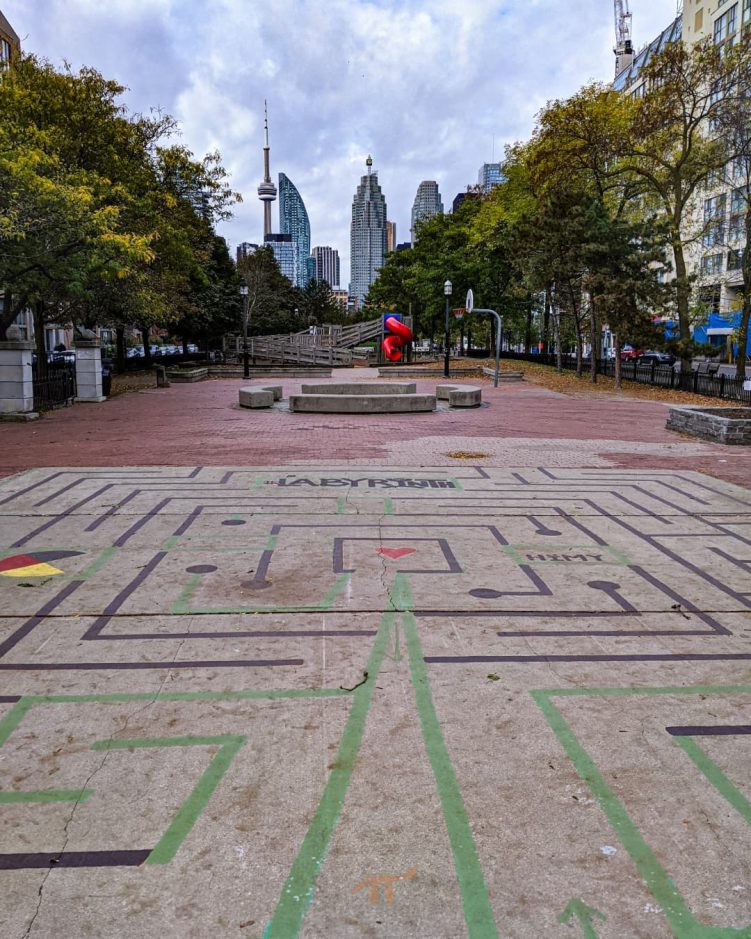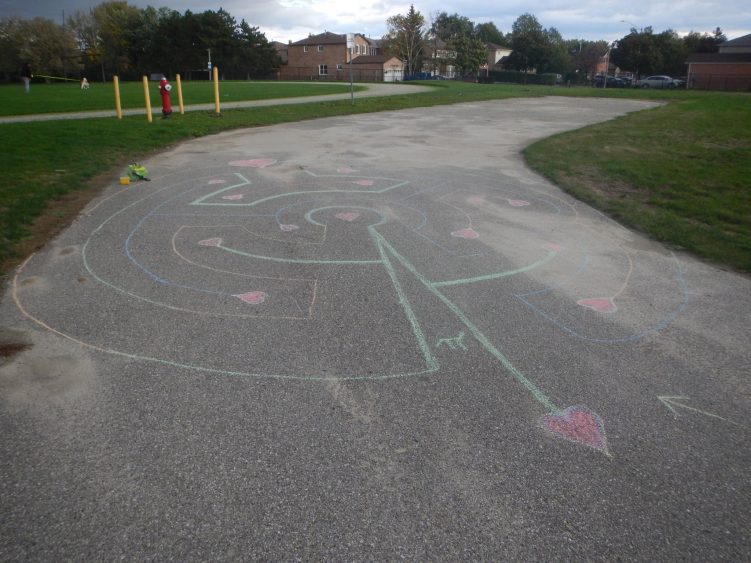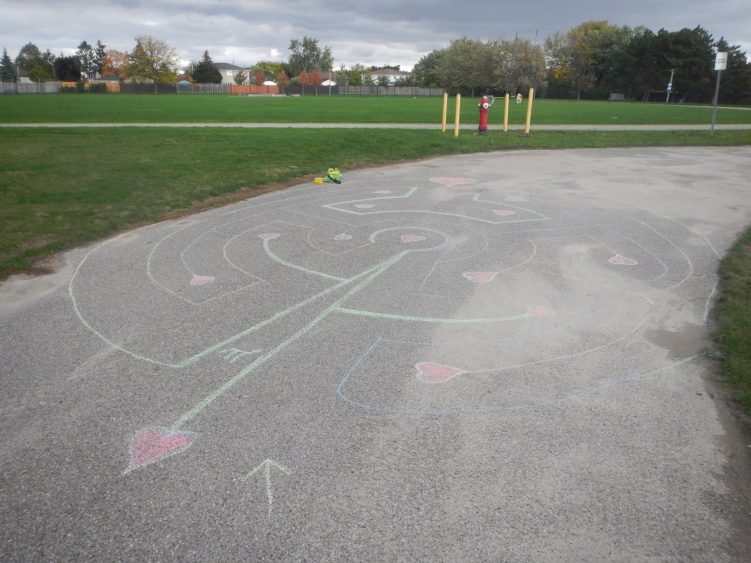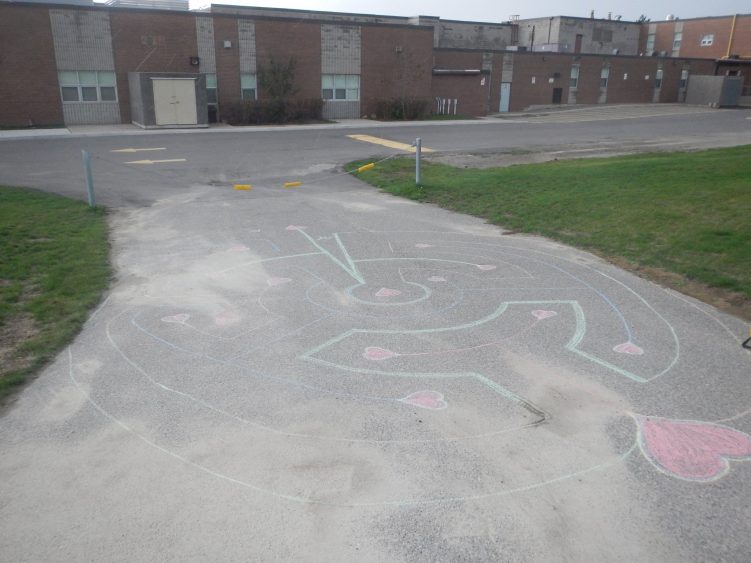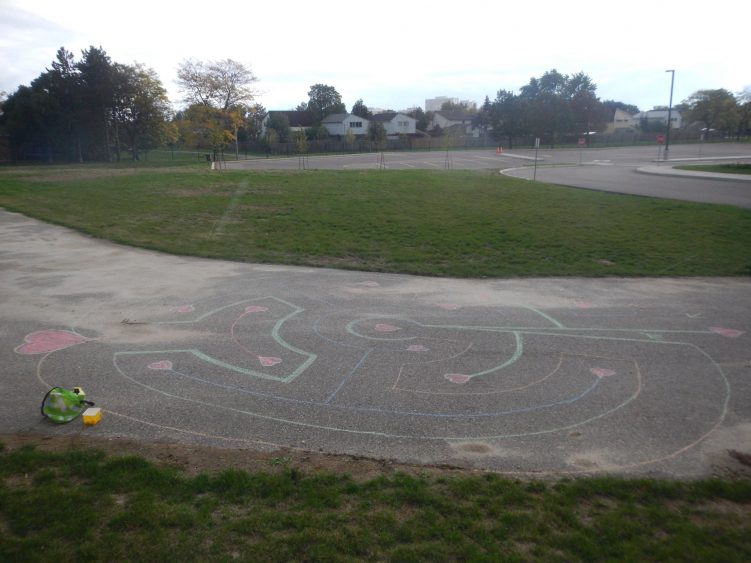Two photos of my painted Labyrinth in David Crombie Park . . .
First perspective looking east, the second, looking west.
Two photos of my painted Labyrinth in David Crombie Park . . . First perspective looking east, the second, looking west. View this post on Instagram A post shared by Kanchan Kumar (@toronto_explored_by_me)
Two photos of my painted Labyrinth in David Crombie Park . . .
First perspective looking east, the second, looking west.
I’ve been approached by the Chaplaincy at Holy Name of Mary Catholic Secondary School in Brampton, Ontario to help them with locating and making a Labyrinth on their high school campus. https://t.co/2kf9Cew7sH pic.twitter.com/T1tf6FhiEW — HïMY SYeD 🍥 City of Labyrinths Project (@LabyrinthsDOTca) October 19, 2021 This seven lane Chalk Labyrinth was my quickly chalked Proof-of-Concept […]
I’ve been approached by the Chaplaincy at Holy Name of Mary Catholic Secondary School in Brampton, Ontario to help them with locating and making a Labyrinth on their high school campus.
https://t.co/2kf9Cew7sH pic.twitter.com/T1tf6FhiEW
— HïMY SYeD 🍥 City of Labyrinths Project (@LabyrinthsDOTca) October 19, 2021
This seven lane Chalk Labyrinth was my quickly chalked Proof-of-Concept in one of our candidate spaces,
An asphalt service lane beside their athletic field . . .
Parking Lot seen in the background below is the better candidate location for a Labyrinth painted on asphalt.
Ergo,
A second Proof-of-Concept Chalk Labyrinth is needed to see if the Parking Lot works best.
Zack 990 by Joshua Weinberg and Mignolo § Powered by WordPress
